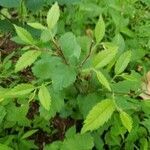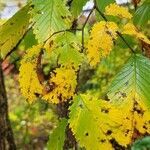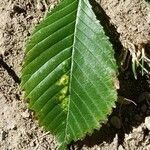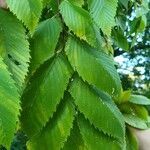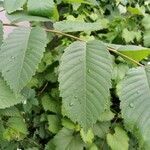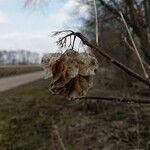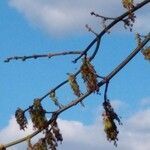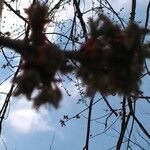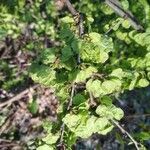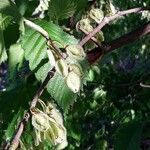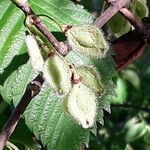A large tree. It grows to 35 m tall. It spreads 30 m wide. The trunk can be 175 cm across. The bark is dark grey and has furrows. The leaves are large and turn bright yellow in autumn. They are in 2 rows. They are 7.5-15 cm long by 2.5-7.5 cm wide. The base is rounded and the sides are unequal. They have double teeth along the edge. They are dark green above and paler underneath. They turn bright yellow in autumn. The flowers are 3 mm wide and green. They are clustered along the twigs. The fruit are 10-12 mm long and one seeded keys. They are deeply notched and with points that curve inwards.
Graceful, arching tree to 40 m, the twigs smooth or short-hairy; lf-buds glabrous or minutely puberulent; lvs ovate-oblong to somewhat obovate, mostly 8–14 cm, glabrous to scabrellous above; fls fascicled, on unequal pedicels to 2 cm; cal usually oblique, lobed; stamens 5–9; stigmas white; fr elliptic, 1 cm, densely ciliate, the sides glabrous and strongly reticulate; 2n=56. Usually in moist, fertile soil; N.S. and Que. to Sask., s. to Fla. and Tex.
